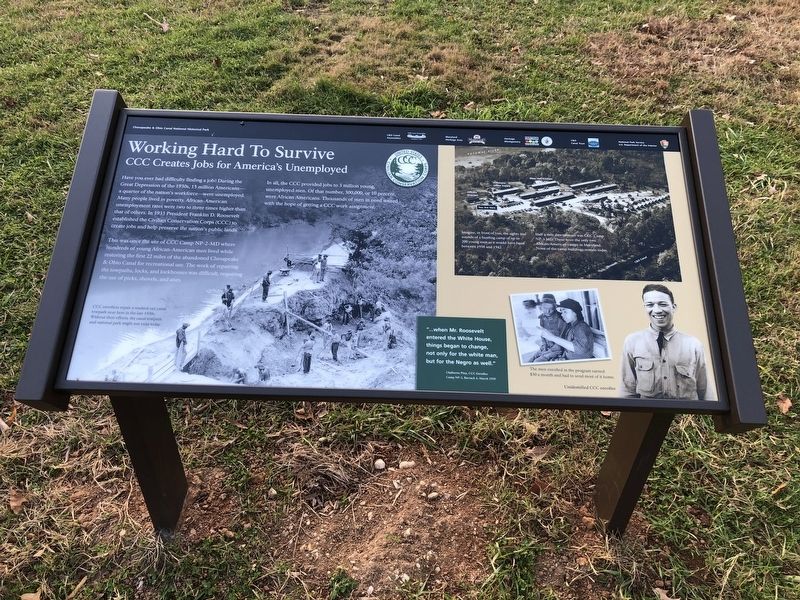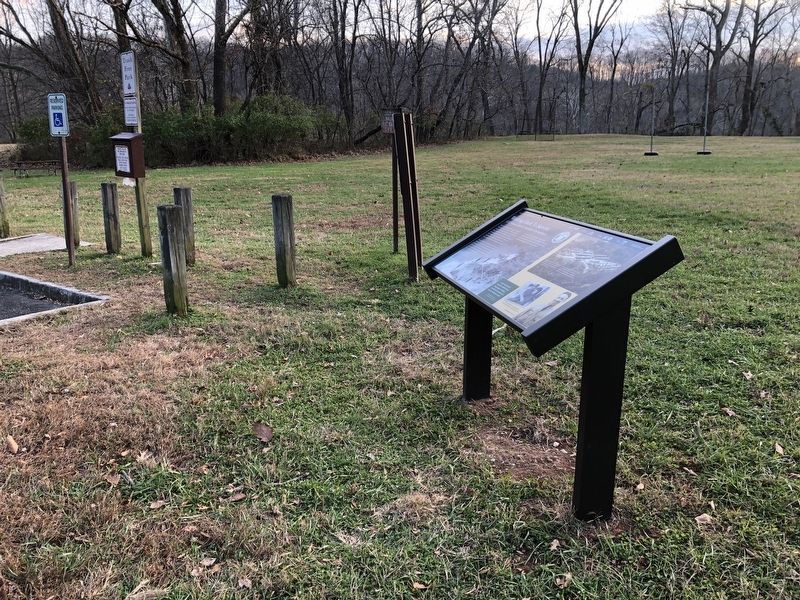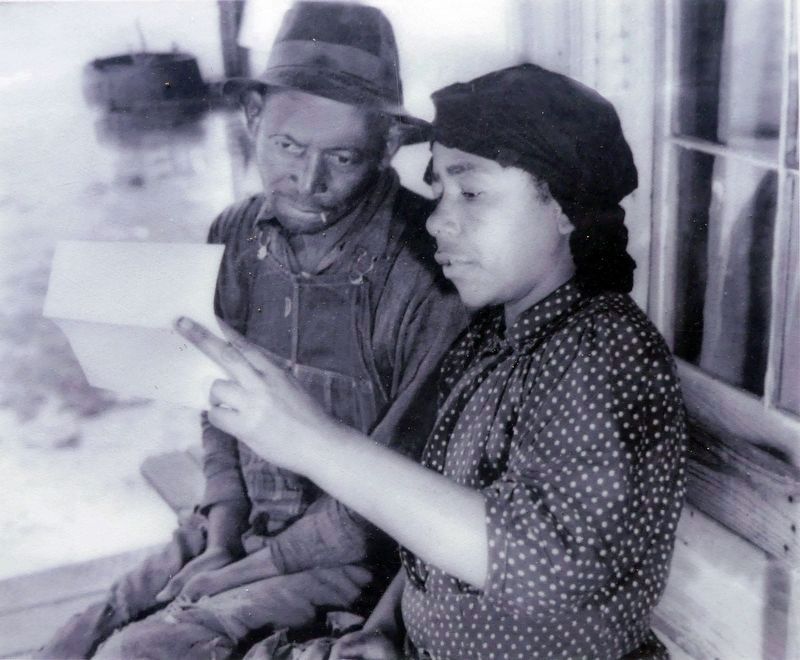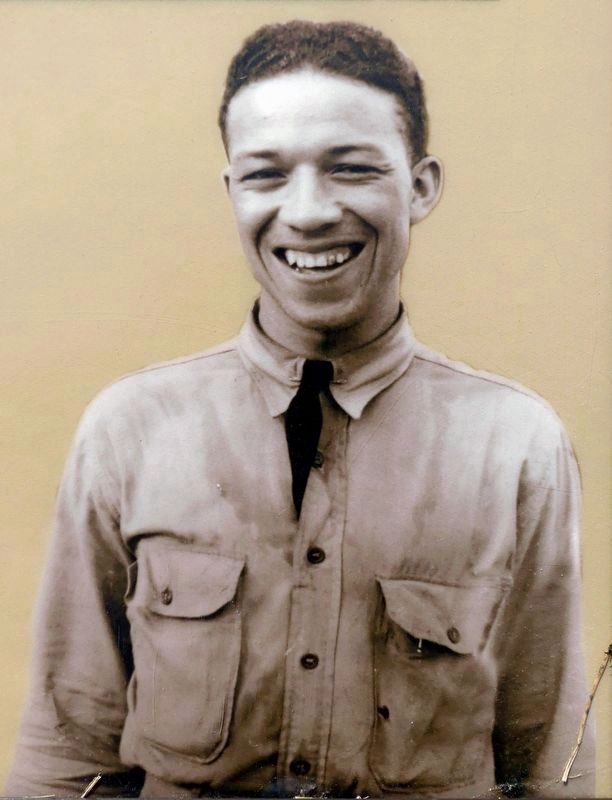Carderock near Potomac in Montgomery County, Maryland — The American Northeast (Mid-Atlantic)
Working Hard To Survive
CCC Creates Jobs for America's Unemployed
— Chesapeake & Ohio Canal National Historical Park —
Have you ever had difficulty finding a job? During the Great Depression of the 1930s, 15 million Americans—a quarter of the nation's workforce—were unemployed. Many people lived in poverty. African-American unemployment rates were two to three times higher than that of others. In 1933 President Franklin D. Roosevelt established the Civilian Conservation Corps (CCC) to create jobs and help preserve the nation's public lands.
This was once the site of CCC Camp NP-2-MD where hundreds of young African-American men lived while restoring the first 22 miles of the abandoned Chesapeake & Ohio Canal for recreational use. The work of repairing the towpaths, locks, and lockhouses was difficult, requiring the use of picks, shovels, and axes.
In all, the CCC provided jobs to 3 million young, unemployed men. Of that number, 300,000, or 10 percent, were African Americans. Thousands of men in need waited with the hope of getting a CCC work assignment.
"…when Mr. Roosevelt entered the White House, things began to change, not only for the white man, but for the Negro as well."
Claiborne Pina CCC Enrollee
Camp NP-2, Barrack 4, March 1939
[Sidebar:]
Imagine, in front of you, the sights and sounds of a bustling camp of up to 200 young men as it would have have been between 1938 and 1942.
Half a mile downstream was CCC Camp NP-1 MD. These were the only two African-American camps in Maryland. None of the camp buildings remain today.
[Captions:]
CCC enrollees repair a washed-out canal towpath near here in the late 1930s. Without their efforts, the canal towpath and national park might not exit today.
The men enrolled in the program earned $30 a month and had to send most of it home.
Unidentified CCC enrollee
Erected by C&O Canal Association; Maryland Heritage Area Authority; Heritage Montgomery; C&O Canal Trust; National Park Service, U.S. Department of the Interior.
Topics and series. This historical marker is listed in these topic lists: African Americans • Charity & Public Work • Parks & Recreational Areas • Waterways & Vessels. In addition, it is included in the Chesapeake and Ohio (C&O) Canal, the Civilian Conservation Corps (CCC), and the Former U.S. Presidents: #32 Franklin D. Roosevelt series lists. A significant historical date for this entry is March 4, 1939.
Location. 38° 58.284′ N, 77°
Other nearby markers. At least 8 other markers are within 2 miles of this marker, measured as the crow flies. Unexpected Benefits in the CCC (within shouting distance of this marker); Burling Defenders (approx. 0.4 miles away in Virginia); The Lock-Keepers (approx. 1½ miles away); Swing-Gate Locks (approx. 1½ miles away); Drop Gate Locks (approx. 1.6 miles away); At All Hours (approx. 1.6 miles away); Lockhouse 10 (approx. 1.7 miles away); Repairing the Breach at Anglers (approx. 1.7 miles away). Touch for a list and map of all markers in Potomac.
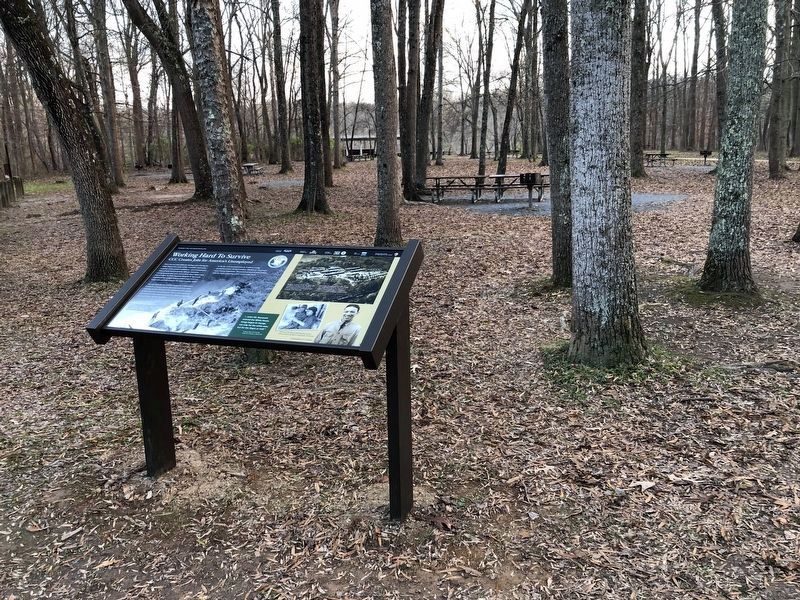
Photographed By Devry Becker Jones (CC0), November 23, 2020
3. An identical marker can be found in the other parking lot for the Carderock Recreation Area
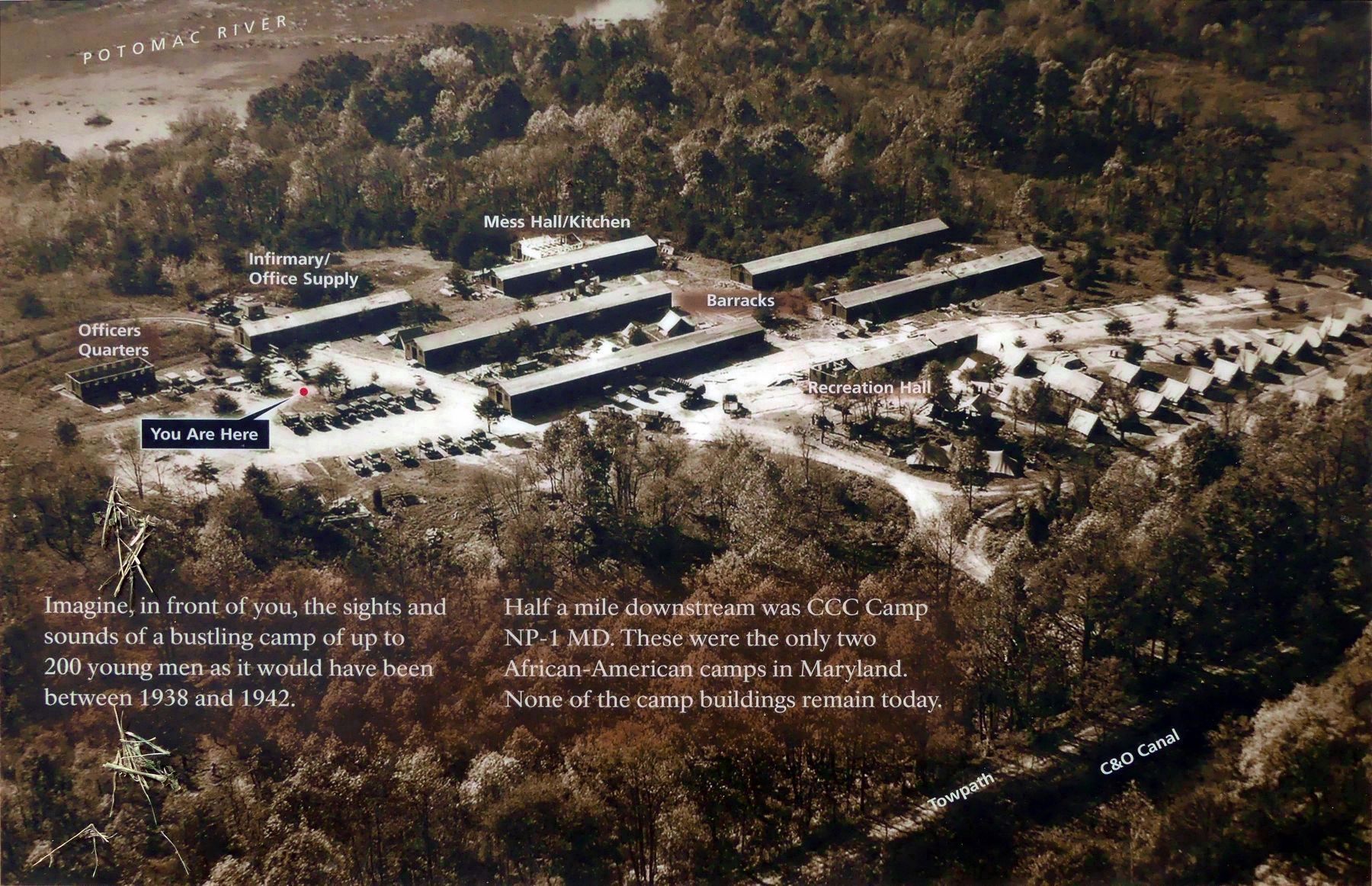
Photographed By Allen C. Browne, May 6, 2021
6. You Are Here …
Imagine, in front of you, the sights and sounds of a bustling camp of up to 200 young men as it would have have been between 1938 and 1942.
Half a mile downstream was CCC Camp NP-1 MD. These were the only two African-American camps in Maryland. None of the camp buildings remain today.Close-up of photo on marker
Half a mile downstream was CCC Camp NP-1 MD. These were the only two African-American camps in Maryland. None of the camp buildings remain today.
Credits. This page was last revised on February 21, 2023. It was originally submitted on November 23, 2020, by Devry Becker Jones of Washington, District of Columbia. This page has been viewed 136 times since then and 3 times this year. Photos: 1, 2, 3. submitted on November 23, 2020, by Devry Becker Jones of Washington, District of Columbia. 4, 5, 6. submitted on May 7, 2021, by Allen C. Browne of Silver Spring, Maryland.
